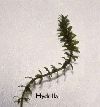
Even down here in New Orleans, it's getting chilly. Mornings are down in the 50's and afternoons are reaching the 80's. I know that sounds warm to you Northerners, but we know that winter is coming, or for some of you, it's here. Time to stop feeding your fish or maybe you already have.
Some of you take your goldfish and koi inside for the winter. If you do, make sure you have adequate filtration and aeration in your inside tank. And just as important make sure it is large enough for all those fish. Don't forget that the fish, because they are most likely in a smaller amount of water, need to have the filter cleaned more often than when they were outside I doubt you have a tank the size of your outside pond in your house, so be sure to keep that filter clean. And never, never turn the pump off. Fish are oxygen breathers just like we are, so make sure they have enough to breathe. If you see fish gasping for air at the top of your inside tank, they are not getting proper aeration. If your power goes out, you must make sure the fish tank water is moved sufficiently to keep oxygen dissolved in it. Just think, if your house heating system goes out because of loss of power, you can keep warm squeezing the turkey baster in the water until the power returns.











